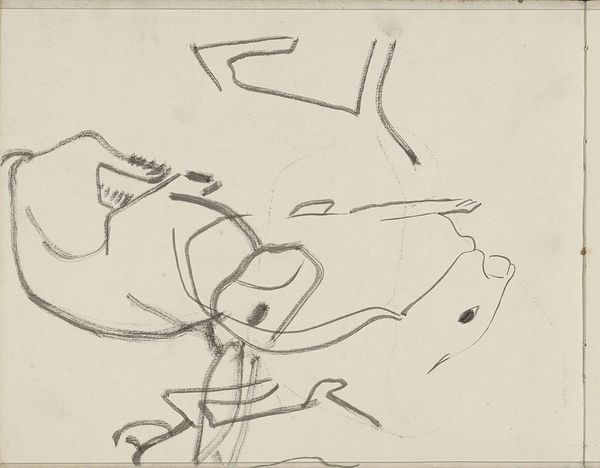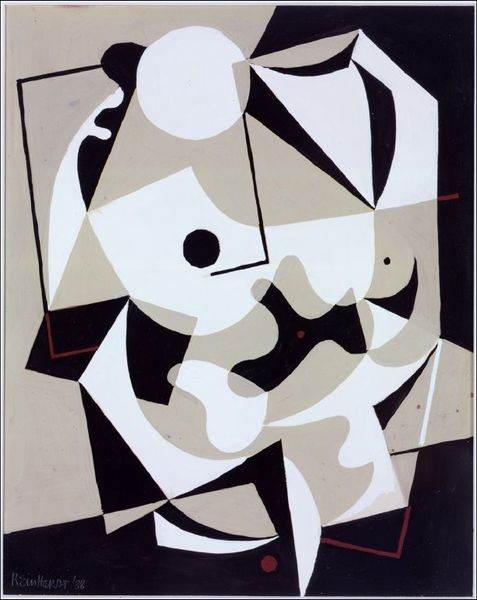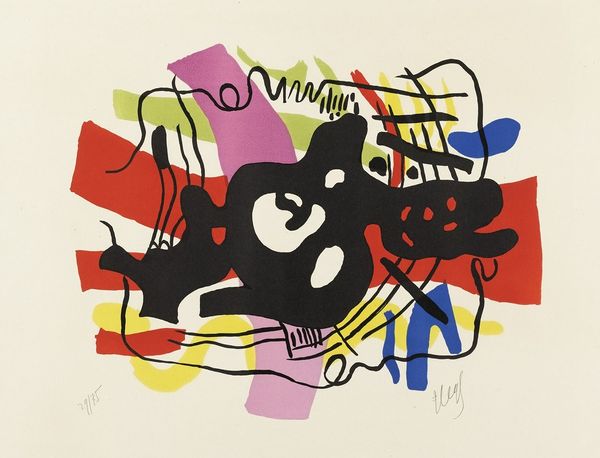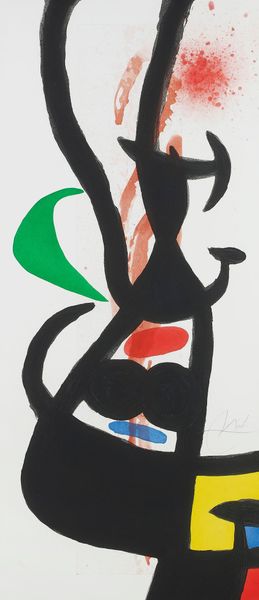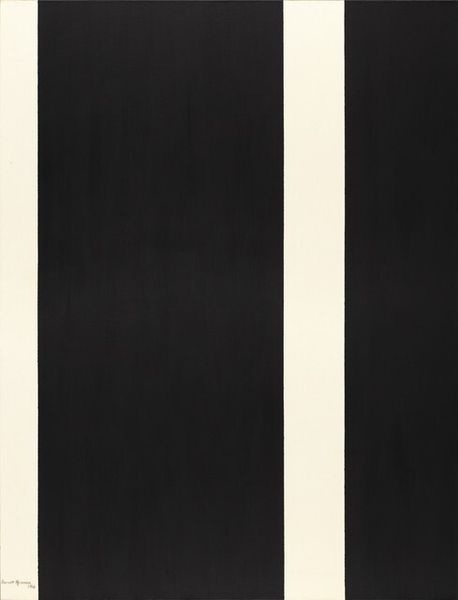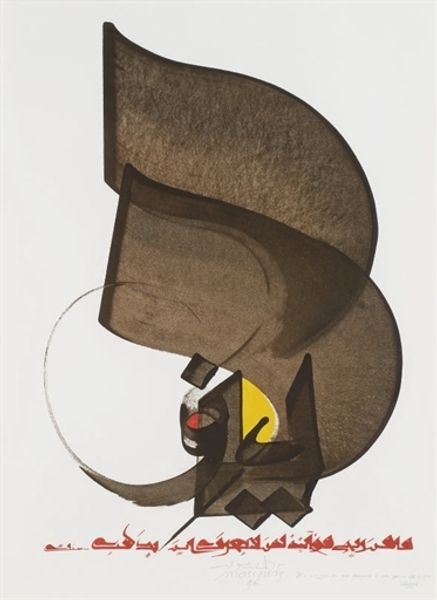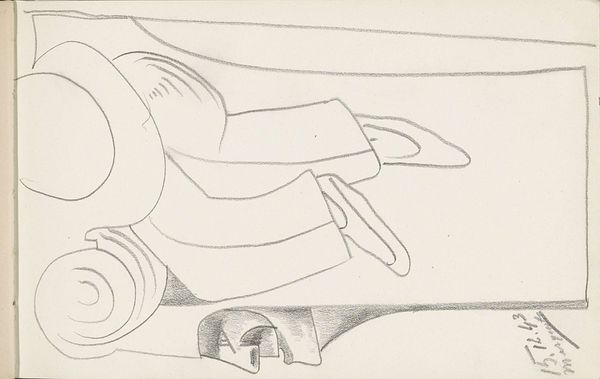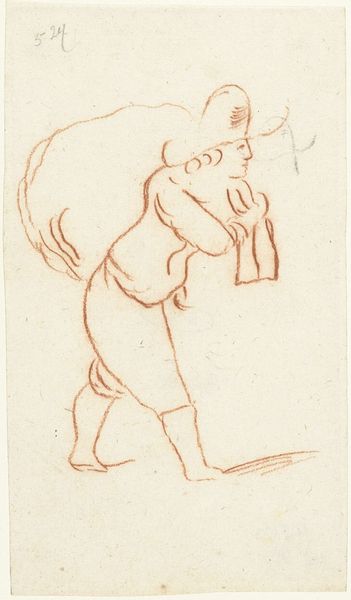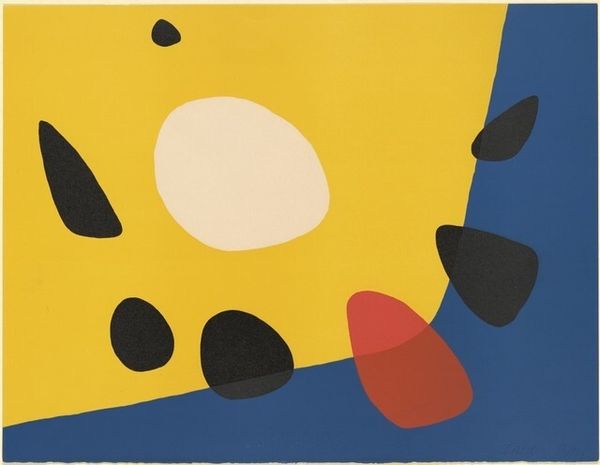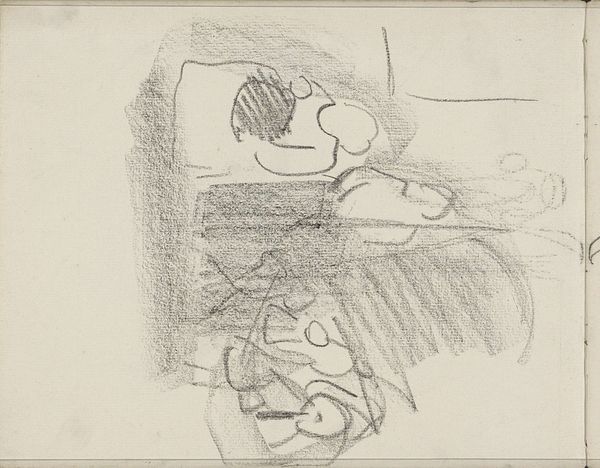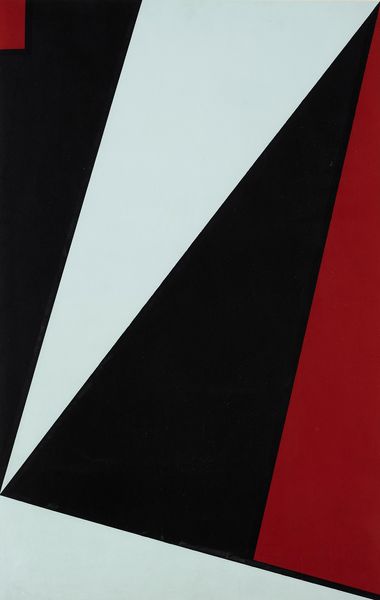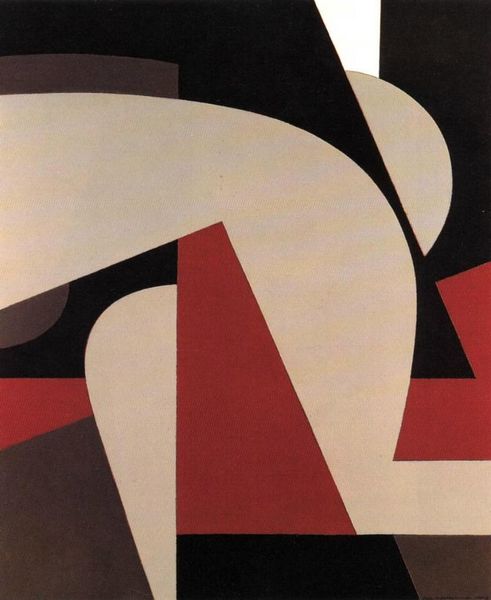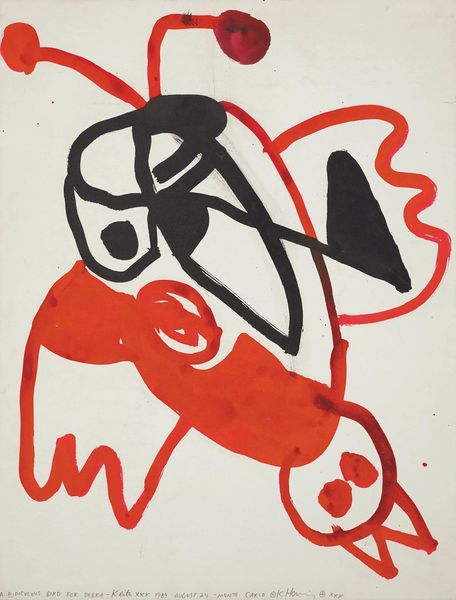
Copyright: Modern Artists: Artvee
Editor: This is Andy Warhol’s "Mickey Mouse" from 1981. The colors are so muted and the lines are really bold. What do you make of the composition, especially the choice of color? Curator: Immediately, I see the structural contrast. Warhol employs simplified forms and flat planes of color. Note how the interplay of the unmodulated, pale yellow background emphasizes the figure's graphic qualities, reinforcing the surface and denying illusionistic depth. Consider also the semiotic function of those colors; the muted tones clash slightly, yet create an immediate sense of 'readability', echoing the cartoon subject matter. Editor: So, the lack of depth and simple shapes are deliberate? To really emphasize the cartoon-like nature? Curator: Precisely. Moreover, the red outline around the grayscale Mickey isolates the form and flattens it further, reinforcing its status as a sign, as a universally recognizable cultural icon stripped bare of emotional complexity. What philosophical framework might explain Warhol’s method? Editor: Maybe something about the end of painting, or reproducing the world instead of creating something new? Curator: Intriguing, the surface flattens the image, negating emotional depth for pure graphic impact. How do you interpret the use of the slightly 'off' colour registration? Editor: It almost looks like a printing error, which feels very modern. As if mechanical reproduction isn’t perfect, or maybe isn't meant to be. Curator: Indeed. Such visual disruption exposes the underlying structure of mass production. That’s very insightful, seeing the layered significance in seemingly simple aesthetic gestures. Editor: Thanks! I see so much more now by focusing on just the shapes and colours themselves. Curator: The visual syntax reveals an entirely new context. Now, how might we apply this knowledge of form and structure to his other work?
Comments
No comments
Be the first to comment and join the conversation on the ultimate creative platform.
